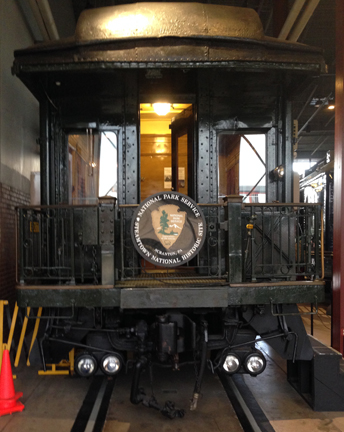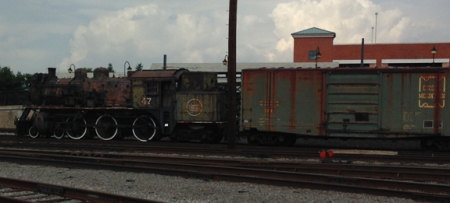8/5/2016 – drove to Gettysburg National Military Park in PA in order to catch the tour to the Eisenhower National Historic Site, which is a short bus ride away.

Anybody home?

The farm was purchased in 1950 when Ike was the first supreme commander of NATO. He was elected the 34th President of the United States in 1952 and served two terms.

Dwight D. Eisenhower and Mamie retired to Gettysburg as John F. Kennedy took office in 1960

From farm boy to Five Star General (in charge or WW II Normandy Landing) to President. He entertained several important dignitaries while in retirement.

Walking through the garden toward “Farm 2”

After returning to the Gettysburg National Military Park Visitor Center we toured the museum and experienced (light and sound show) the “Cyclorama,” which is a 360o painting of the Battle of Gettysburg. This is one small view of battle; Little Round Top is in background.

8/6/2016 – First State National Monument was designated by President Obama in 2013 and was later re-designated as First State National Historical Park by Congress. There are currently three official parts (1) Dover Green, (2) Old New Castle Courthouse, Green and Sheriff’s House and (3) Woodlawn on the DE and PA border along Brandywine Creek. This is a picture of the new state capital in Dover.
This is the Old State House on “The Green.” Delaware became known as the First State because it was the first state to ratify the Constitution in 1787. RI is the smallest state by size (area) and DE second.

Houses surrounding “The Green”





Next, drove to New Castle DE and started our tour at the Old New Castle Court House. It was the Colonial Capital and DE’s first State House (1776). It is where the Delaware State was created when it separated from PA


View as you walk up from the Delaware River. The Sheriff’s House is to the right and connected to the Court House. It will become the First State National Historical Park Visitor Center.



New Castle Common, also known as the Green; statue of William Penn

William Penn’s first landing and a model of the fort that existed here. Note the Dutch, Swedish and English flags. All were important settlers here.

 Amstel House (1730), we both liked the history and quaintness of Old New Castle
Amstel House (1730), we both liked the history and quaintness of Old New Castle

It was a short half hour drive to the site of Fort Christina in Wilmington DE

This was the site where Swedes landed in 1638 to establish a colony in the “New World.” This site along with the nearby Old Swedes Church are future authorized sites as parts of the First State National Historical Park.
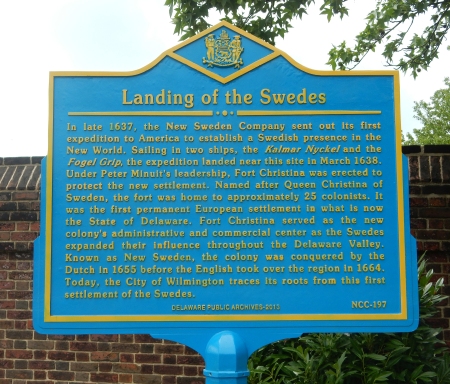

This monument was a gift from Sweden and was dedicated in 1938. It is topped by the Tall Ship Kalmar Nyckel, one of the two ships that brought Swedes and Finns to this settlement.




This model is in the Kalmar Nyckel Foundation Museum next to the Fort Christina site
 A replica of the Kalmar Nyckel was not in port, however, we were shown the indoor training center for operation of the ship
A replica of the Kalmar Nyckel was not in port, however, we were shown the indoor training center for operation of the ship


The ship is available for tours

Philadelphia was next, first stop Thaddeus Kosciuszko National Memorial. “Hero of two continents,” was born in Poland in 1746 and in 1776 was in Philadelphia offering his services as an engineer. His two most notable accomplishments were the fortifications at Saratoga and West Point. In 1780 he was assigned to the Southern Army under General Nathanael Greene and continued to serve until the end of the war. In 1783 Congress promoted him to Brigadier General. In 1784 Kosciuszko returned to Poland and in the 1790’s was a leader in the Polish resistance to Czarist Russia’s domination. He was seriously wounded in battle and imprisoned in Russia. In 1796 he was freed from prison on the condition that he never return to Poland. In 1797 he returned to a hero’s welcome in Philadelphia. This is the house where he rented a room for about half a year before he returned to Europe.


Best and Neatest Draughtsman – General Horatio Gates

When he returned to the U.S. in 1797, he was given $19,000 and 500 acres in Ohio for his service during the war. When he left the U.S. again in 1798 he wrote a will in which he stated “. . . I hereby authorize my friend Thomas Jefferson . . . in purchasing Negroes from among his own or any others and giving them Liberty in my name, in giving them an education . . .” He died in Switzerland in 1817. Thomas Jefferson said of Kosciuszko, “. . . as pure a son of Liberty as I have ever known.”

Second stop in Philadelphia, Edgar Allan Poe National Historic Site. The house is currently going through a renovation.


Who was Poe? – read the opening panel.

“The Raven” is one of the poems I memorized while in high school

Poe authored “Morella” (death and terrifying rebirth of a beautiful woman), “The Fall of the House of Usher,” “The Imp of the Perverse,” “The Pit and the Pendulum,” “The Black Cat” and many others.

Inspired by Poe, I wrote a story about “Our Family Cat” for an English class in high school. I described our cute little cat, etc., etc. and how at the end I mutilated it and stuffed it down a sewer in the basement. The last line was; “To this day, no one knows what happened to our cute little pussy cat.” It was well written and grammatically excellent.
An angry and extremely upset teacher met me at the door as I walked into class the next day. “How could you do something like that,” she cried! I was immediately sent to the office and expelled until my parents met with the principal! Well, we never even had a cat! Perhaps this is a good example of the “power of the pen.”

Bust of Poe and mural on a nearby building


Third stop in Philadelphia was the Benjamin Franklin National Memorial in the atrium of the Franklin Institute Science Museum. The plane is called “The Pioneer.” It was the first stainless steel airplane and was built in 1931.

The Benjamin Franklin statue is very impressive – 20-foot tall on a pedestal of white marble. It is the focal point of Memorial Hall, which was modeled after the Roman Pantheon.

We then walked to Logan Circle. William Penn can be seen on top of City Hall in the distance. It is 548 feet from the street to the top of statue. By comparison, the Washington Monument in DC is 555 feet tall.

The fountain offered a nice opportunity to cool-off on a hot/humid day!

8/7/2016 – Boating with Dave and Carol on English Creek in NJ. It is a tributary of the Great Egg Harbor National Scenic and Recreational River. Dave and I kayaked from Lake Lenape up the Great Egg Harbor River the next day.

8/9/2016 – Fred and Liz’s river house on Oyster Creek

Getting ready for crabbing!

On our way out –



Using Bunker fish for bait


Returning to port

“Sad” task of ripping off backs and gills (which kills them!) and then cleaning them out with a hose

“Happy” task of eating them!
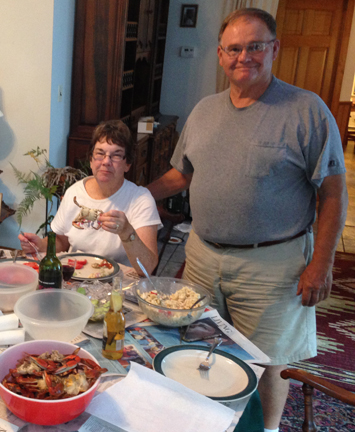
8/10/2016 – took the Garden State Parkway to Sandy Hook NJ, which is at the entrance to the waterway from the Atlantic Ocean to New York Harbor. It is a unit of the Gateway National Recreation Area.

The “New York Light House,” now known as the Sandy Hook Lighthouse (103 ft) was lighted for the first time in 1764. It is the nation’s oldest lighthouse.


It first used whale oil lanterns. A Fresnel lens was added in 1857. Kerosene was introduced in the late 1870’s and electricity around the turn of the century.


The lighthouse was 500 feet from the tip of Sandy Hook when it was constructed. Now, it is 1.5 miles from the tip as the result of ocean currents depositing sand through the years. This Observation Deck provides a view of the tip as well as the Verrazano Narrows Bridge in the distance, left of the tree in the middle of photo. To the right of the tree is Brooklyn.

The U.S. Army first fortified Sandy Hook during the War of 1812 to guard the entrance to New York Harbor

The Rodman Gun was the largest muzzle loading gun of the Civil War era

Fort Hancock was established here in 1895. Additional gun batteries were built and later anti-aircraft guns. Nike surface-to-air missiles were added in the 1950’s. The fort was deactivated in 1974.

It took about an hour to drive from Sandy Hook to Fort Wadsworth, which is located under the south end of the Verrazano Narrows Bridge on Staten Island. It is another unit of Gateway National Recreation Area.
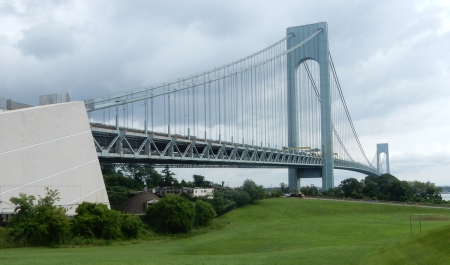

The first defenses were built here in 1779 by the British. This enabled them to control the narrows and New York City throughout the Revolutionary War.

The U.S.built its first fort here in 1814 and named it Fort Tompkins. It was rebuilt in 1859 before the Civil War. This is a Civil War era cannon in front of the Visitor Center.

The upper fort was used primarily for housing soldiers and munitions. We were able to catch the 11am ranger tour. Here is a picture of our tour group inside the parade ground followed by a picture of an infantry inspection there about 1920.


Tunnel and munitions storage area

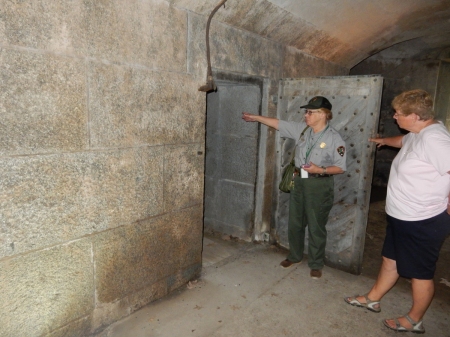
Fort Tompkins was renamed Fort Wadsworth in 1902. This is an aerial view of Fort Wadsworth about 1920.

Battery Weed of Fort Wadsworth is located on the water. The Manhattan skyline is on the left and the Verrazano Narrows Bridge on the right. Note the lighthouse on the water side.



This is one of the few guns remaining at the site; it was manufactured in 1898


Thomas Edison National Historical Park is located in West Orange NJ. Edison was born in Milan, OH (1847). His statue is one of two from Ohio that was selected to be placed in the U.S. Capital in Washington DC. Edison is famous for his many inventions. He built his first major laboratory at Menlo Park NJ in 1876. After his first wife died, Edison married Mina Miller in 1886 and moved to West Orange where he also opened a new laboratory complex in 1887. This is a view of the entrance.


He built his phonograph works here – this was an explanation/demonstration of his phonograph

One of his machine shops

One of the chemistry labs

Edison’s library, where he did much of his work

We obtained a pass and toured his nearby Glenmont Estate where he and his wife are buried

Morristown National Historical Park – Most Americans know that Valley Forge was a winter encampment of the Continental Army (1777-1778). However, few know that there were six other sites that were used as winter encampments, one of which was Morristown NJ – early 1777, 1779, 1780, 1781 and 1782. The Revolutionary War lasted 6 years!

As usual, we started at the Visitor Center. Example of soldier’s winter cabin.

Afterward, we had a personal ranger tour of the Wick House

During the 1779-80 encampment, Gen. Arthur St. Clair made his headquarters here



Recreated solder’s huts in Jockey Hollow



Officer’s hut

Washington made his headquarter in the Ford Mansion in Morristown about four miles from Jockey Hollow



Paterson Great Falls National Historical Park is located in an inner city area of Paterson NJ.

The Falls are about 300 feet wide and 77 feet high. They are the second most powerful waterfalls east of the Mississippi (Niagara Falls are first).

Alexander Hamilton founded the city of Paterson in 1792, 15 miles west of New York City, when he was Secretary of the Treasury.

It was the Falls of the Passaic River that powered the mills, factories and city. Paterson became the first planned “industrial” city in the nation
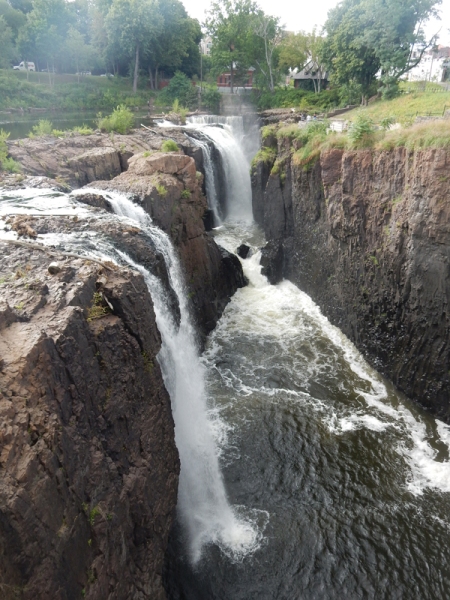
We did the Mill Mile Walking Tour to the Mary Ellen Kramer Park and back


Drove I80 over the Delaware Gap and stayed in Stroudsburg PA
8/11/2016 – Delaware Water Gap National Recreational Area – 40 miles of the Delaware River valley, that is located on the northeast border of PA and the northwest border of NJ

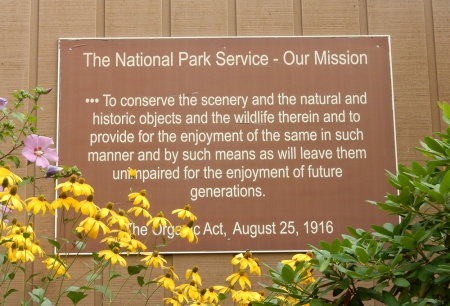

Did a short hike around the Park Headquarters Visitor Center before it opened at 8am


Tom “experiencing” the Delaware Scenic River at the Eshback Paddling Access

Did (light rain) the half mile hike to Dingmans Falls, the stairs to the top of the Falls and then the Visitor Center on our return

Camera battery depleted, so I had to switch to cell phone pictures





Silver Thread Falls

The ranger recommended we also do the 1.4 mile waterfalls loop at Childs Park



Factory Falls

Fulmer Falls
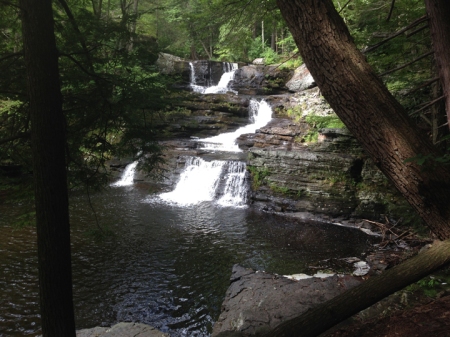
Deer Leap Falls


Brook Woolen Mill Ruins


Of course we also had to see the highest falls in the Delaware Water Gap – Raymondskill Falls. The falls have a 178 foot descent.

We hiked to the top of the Middle Falls – rock outcrop looks like a Tyrannosaurus Rex head!

View of the Middle Falls

We were unable to hike to Raymondskill Creek because that trail was closed
While driving through Milford PA on our way out of the park we saw small signs for Grey Towers National Historic Site. I had not heard of this site, so we decided to take a look. We were thrilled with what we discovered! Grey Towers was completed in 1887 as the summer home for the Pinchot family. The French chateau-style mansion was given to the United States Forest Service (USFS) in 1963 to honor the Pinchot family’s conservation legacy. This is the ONLY National Historic Site administered by the USFS. Entrance –




James Pinchot was a successful businessman and philanthropist. He was disturbed by the destructive logging practices then prevalent in the country and encouraged his eldest son Gifford to consider a career in forestry, when no such profession existed in America. Gifford took all the related courses he could while at Yale (graduated 1889). Fluent in French, he decided to study forestry in France. After returning to the U.S., his family supported his work on scientific forestry and natural resource conservation.


He became head of the Division of Forestry in 1898 and was appointed the first chief of the newly created United States Forest Service, by his good friend President Theodore Roosevelt, in 1905. He was an advocate of conservation of the Nation’s forests through planned use and renewal. This at times put him at odds with those supporting national parks and wilderness preservation and protection. At the beginning of my presentations on National Parks, I explain that the National Park Service is under the Department of the Interior and the U.S. Forest Service is under the Department of Agriculture.

We happened to be there on Gifford’s 151st birthday. So, not only was admission free but there was a cadre of at least 20 USFS employees and volunteers to provide immediate information on all aspects of the house, property and Pinchot family – and we received cookies and USFS fans to boot!
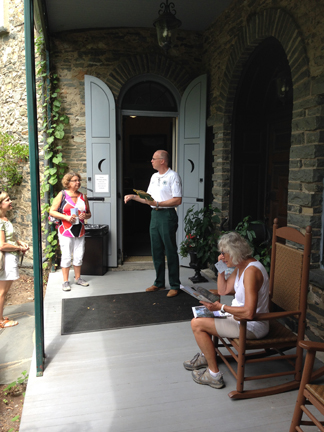
North side of Great Hall – great Persian carpets!

South side of Great Hall

Parlor

This is a painting (not a mural) brought from France in pieces. It shows ships flying Dutch flags – the guide stated that they were French flags. Though the same colors, the French flag has vertical stripes.

Gifford Pinchot was a member of the Bull Moose Party!

Partial view of office in front tower

Partial view of bedroom in back tower

Drawers with different wood (tree) samples

Protected outdoor eating area where food was passed from person to person on floating food “barges”

Children’s “Playhouse”

A view of my world

It took about an hour to drive to Steamtown National Historic Site. It occupies about 40 acres of the Scranton Railroad Yard of the Delaware, Lackawana and Western Railroad.
Steamtown preserves and interprets the legacy of steam-era railroading
Backs of trains were often used for political speeches
Simple description of a Steam Locomotive
Railroads used glamourous marketing to increase riders to cities and from cities to “Natural Wonders.”
The Roundhouse contains several steam engines. You can see “steam” rising from this one
A Grand Trunk Western locomotive – there was a large Grand Trunk Western Railyard at the end of my street in Chicago. I became very familiar with it in the 1950s, walking the tracks, trespassing inside the yard, climbing on railcars and huge buildings and hopping trains.
There was also a Turntable at about 50th and Kedzie where we would watch the engines being placed in the Roundhouse
Locomotive outside History Museum
“All A-Board” – we took a half-hour train ride to the edge of the Railyard and back
Lackawana diesel engine that pulled-pushed our train
Pictures from the Railyard
Hard and relatively clean-burning anthracite coal spurred growth and expansion of railroads
Pictures of locomotives in front of entrance – the first is a Reading steam locomotive
Reading double diesel engine – recall that Reading is one of the four railroads on the game of Monopoly
Union Pacific steam locomotive called the “Big Boy” was manufactured in 1941
We got home at midnight – it was a long day!
8/28/2016 – Charles Young Buffalo Soldiers National Monument
This is a relatively new (2013) National Monument and there are still not regular hours for viewing “Youngsholm.” Which is the name Charles Young gave his home when he was a professor at Wilberforce College. It is the closest national park unit to our home in Springfield OH. It took only a half-hour to drive there.

This roadside sign gives a good summary of Charles Young’s career


In 1866 Congress established six all-black regiments. One assignment was the western frontier during the “Indian Wars.” The Indians called the black cavalry troops “buffalo soldiers” because their dark, curly hair resembled a buffalo’s mane and they had a fighting spirit like the buffalo.

I called and made a 1:30 appointment to view the inside of the house. We watched a ten minute video and then a nice young lady, a student at Wilberforce College, gave us a tour of the house. There was a limited amount of information there, mainly some posters with pictures but the displays did a nice job of reviewing Charles Young’s life.



The house and barn are on 60 acres of the original homestead and there are tentative plans for re-creating the farm and home to a semblance of what it was around 1900. I believe the cost is estimated to be 5 million.




